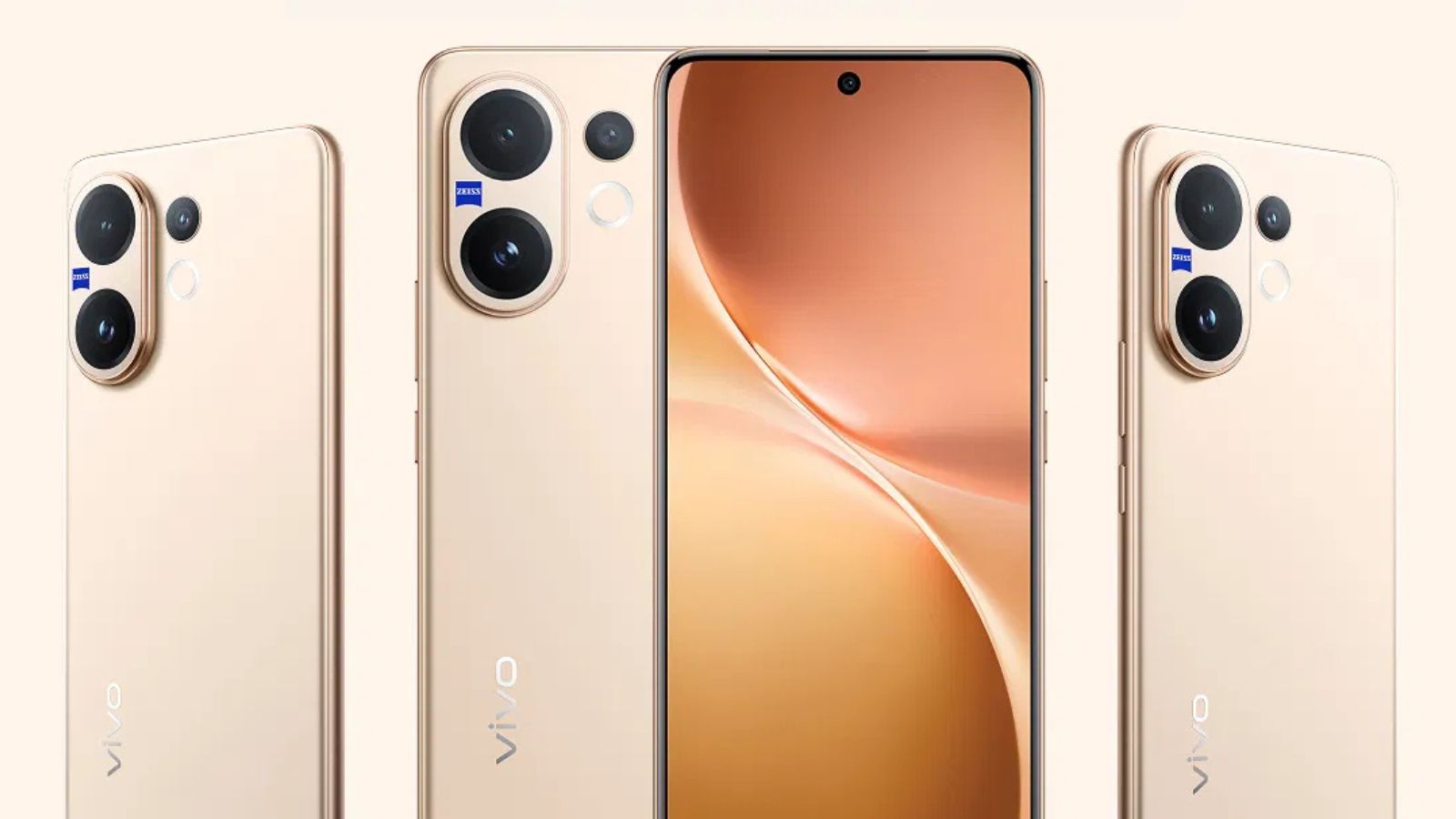The smartphone industry thrives on speculation, leaks, and benchmark tests that give enthusiasts a sneak peek at what’s coming. One of the latest devices to make headlines is the Vivo V60 Lite, expected to launch in both 4G and 5G variants. Ahead of its official debut, the phone has appeared on Geekbench, providing crucial details about its performance, chipset configuration, and possible positioning in Vivo’s mid-range lineup.
Early tests reveal that the V60 Lite 4G will likely be powered by Qualcomm’s Snapdragon 685, while the 5G edition looks set to feature MediaTek’s Dimensity 7300. With both phones carrying 8GB RAM and running the latest Android 15 software, the benchmark scores highlight a clear distinction in power and efficiency.
Let’s break down the leaked numbers, analyze real-world implications, and explore how Vivo might strategically place these two variants in the competitive mid-range smartphone market.
1. Leak Overview
On August 25, 2025, benchmark results for the Vivo V60 Lite surfaced, revealing two distinct versions—one supporting 4G connectivity and the other equipped for 5G networks. Both models were spotted with 8GB RAM, indicating that Vivo is maintaining a consistent memory configuration across the lineup. However, the processors powering these devices tell a different story.
- Vivo V60 Lite 4G (Model V2530):
This version is tipped to use Qualcomm’s Snapdragon 685 SoC, paired with an Adreno 610 GPU. On Geekbench 6, the phone scored 467 points in the single-core test and 1,536 points in the multi-core test. These numbers reflect what we typically see from Snapdragon 600-series chips—efficient, reliable, but not designed for heavy workloads. - Vivo V60 Lite 5G (Model V2529):
The 5G version reportedly houses MediaTek’s Dimensity 7300 SoC with a Mali-G615 MC2 GPU. Its benchmark results were significantly higher, achieving 939 points in single-core and 2,527 in multi-core tests. This not only outpaces the 4G model but also positions the device closer to upper mid-range smartphones in terms of raw performance.
These results clearly indicate that Vivo intends to target two distinct customer segments—those prioritizing budget and efficiency with the 4G model and those seeking performance and future-proof connectivity with the 5G version.
2. Putting the Numbers in Focus
When looking at benchmark data, numbers tell part of the story. To put the results in perspective, here’s a simple breakdown:
| Variant | Processor | Single-Core Score | Multi-Core Score |
|---|---|---|---|
| Vivo V60 Lite 4G | Snapdragon 685 (Adreno 610 GPU) | 467 | 1,536 |
| Vivo V60 Lite 5G | Dimensity 7300 (Mali-G615 MC2 GPU) | 939 | 2,527 |
The Dimensity 7300-powered 5G model nearly doubles the single-core performance and offers a substantial leap in multi-core capability compared to its 4G counterpart.
This performance gap has important implications:
- Snapdragon 685: Designed for budget and mid-range devices, this chipset balances efficiency and smooth performance for daily tasks. However, it is not built for demanding gaming or resource-heavy applications.
- Dimensity 7300: A next-generation processor with robust multi-core efficiency, advanced GPU capabilities, and better thermal handling. It signals that the 5G variant will cater to users who want to game, multitask, and enjoy faster overall responsiveness.
The numbers suggest that Vivo is clearly differentiating these two models not just by connectivity, but also by their real-world user experience.
3. Real-World Implications
Benchmarks are valuable indicators, but consumers want to know how these numbers translate into daily use. Let’s consider how each variant might perform in real scenarios:
Everyday Use
- The V60 Lite 4G is well-suited for standard activities—messaging, browsing, video streaming, and light social media use.
- The V60 Lite 5G, with nearly double the single-core score, will feel noticeably smoother in tasks like app loading, transitions, and multitasking.
Productivity and Multitasking
- With Android 15, features like split-screen multitasking and improved background app management will run more fluidly on the Dimensity 7300.
- Users who frequently switch between apps, edit documents, or juggle multiple browser tabs will benefit significantly from the 5G variant’s stronger multi-core performance.
Gaming and Graphics
- The Adreno 610 GPU in the Snapdragon 685 is sufficient for casual gaming but will struggle with graphics-heavy titles. Frame drops and thermal throttling may appear in demanding games.
- The Mali-G615 MC2 GPU in the 5G model offers better frame rates, more stable graphics rendering, and improved performance in popular titles like Genshin Impact, Call of Duty Mobile, or Asphalt 9. Gamers will naturally gravitate towards this version.
Battery Efficiency and Charging
- Both chips are efficient, but the Snapdragon 685 may consume less power under typical usage due to its lower performance ceiling. This could result in better battery longevity on the 4G model.
- The 5G version, while more powerful, is expected to include 90W fast charging, allowing users to top up their phones quickly and compensate for higher power draw. This makes it appealing for heavy users who prioritize speed and convenience.
4. Vivo’s Broader Strategy
The leak highlights Vivo’s clever approach in catering to two different audience groups with the V60 Lite.
- The Budget-Friendly Choice (4G Variant):
By sticking with the Snapdragon 685, Vivo can keep costs low while still providing a reliable mid-range smartphone. This device will likely appeal to students, first-time smartphone buyers, and users who don’t require 5G connectivity or heavy performance. - The Value-Packed Choice (5G Variant):
With the Dimensity 7300, the 5G model steps into a more competitive space, offering performance and features closer to premium mid-range phones. It targets tech-savvy buyers who demand power, gaming performance, and faster connectivity at a reasonable price.
Together, the two phones allow Vivo to broaden its reach, giving customers the flexibility to choose based on their priorities—cost efficiency versus performance and future-readiness. This dual strategy could help Vivo strengthen its foothold in markets where consumer budgets and demands vary widely.
5. What Remains Unknown
Despite the Geekbench revelations, several important details remain under wraps:
- Display and Design: Will both models feature the same screen size, refresh rate, and design aesthetics? Rumors suggest a high-refresh-rate AMOLED panel, but this is yet to be confirmed.
- Camera Setup: Vivo has built a reputation for delivering strong camera experiences even in mid-range phones. The V60 Lite’s camera configuration is still a mystery, but users can expect multi-lens setups with AI enhancements.
- Battery Capacity: While 90W charging has been hinted at, the actual battery size remains undisclosed. This could influence how long the phones last between charges.
- Pricing Strategy: The most crucial unknown is pricing. Will the gap in performance translate to a significant difference in price, or will Vivo keep the range accessible to attract more buyers?
- Availability: Teasers suggest that the V60 Lite may first launch in Southeast Asian markets before expanding globally. Exact dates and regions, however, remain unconfirmed.
Conclusion
The Vivo V60 Lite has already managed to grab attention even before its launch, thanks to these Geekbench leaks. The numbers reveal a sharp performance divide between the Snapdragon 685-powered 4G model and the Dimensity 7300-powered 5G version.
For users seeking affordability and efficiency, the 4G variant will be a solid option for day-to-day tasks. On the other hand, those wanting next-generation connectivity, gaming capability, and powerful multitasking will find the 5G model a compelling choice.
With Android 15, fast charging, and Vivo’s track record of competitive mid-range offerings, the V60 Lite lineup looks promising. While details on pricing, cameras, and display specs remain a mystery, these early benchmark results set the stage for what could be one of Vivo’s most strategic dual launches in recent years.
As the official unveiling approaches, one thing is clear: Vivo is aiming to strike the perfect balance between affordability and performance, ensuring the V60 Lite finds a place in the hands of a wide variety of consumers.

